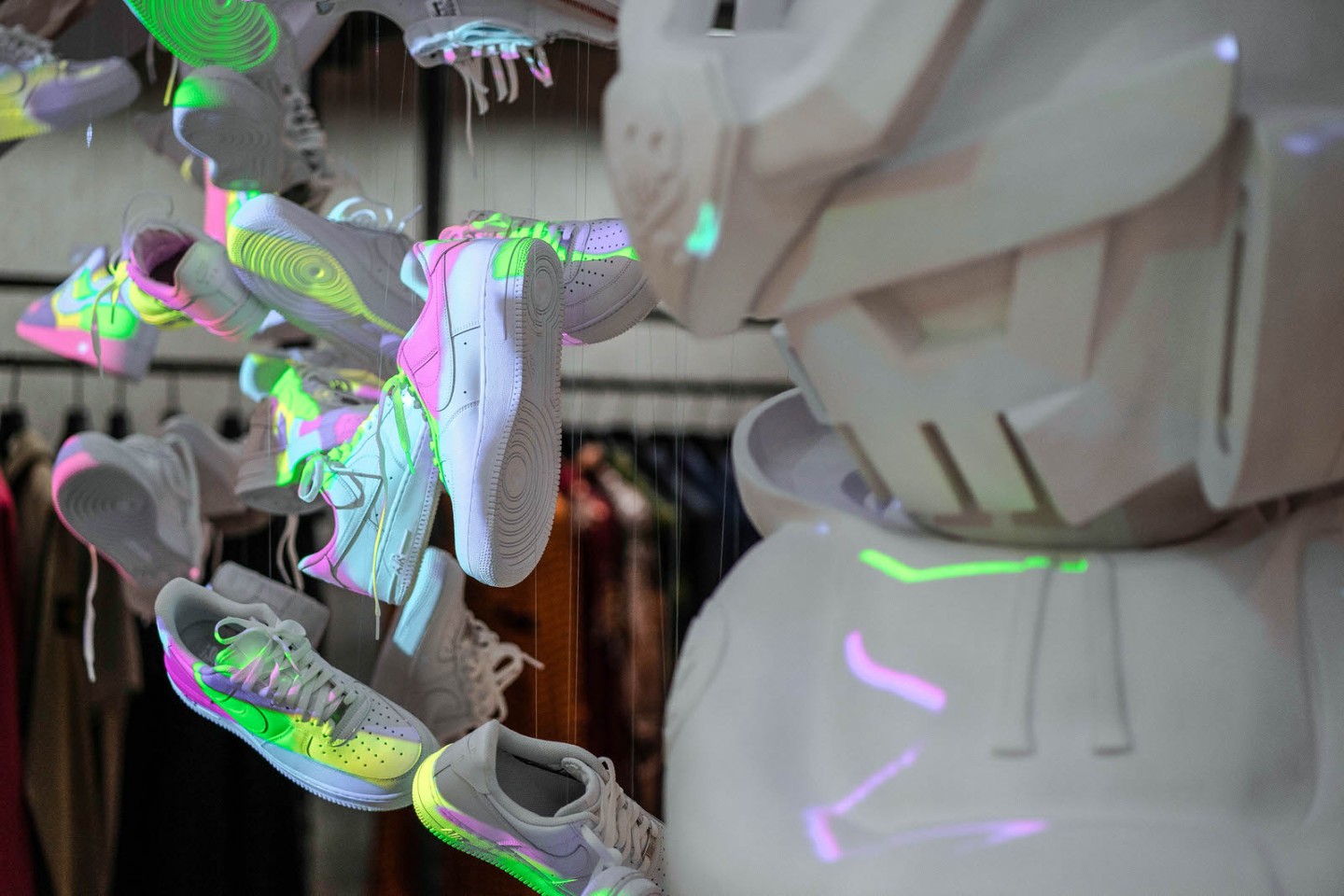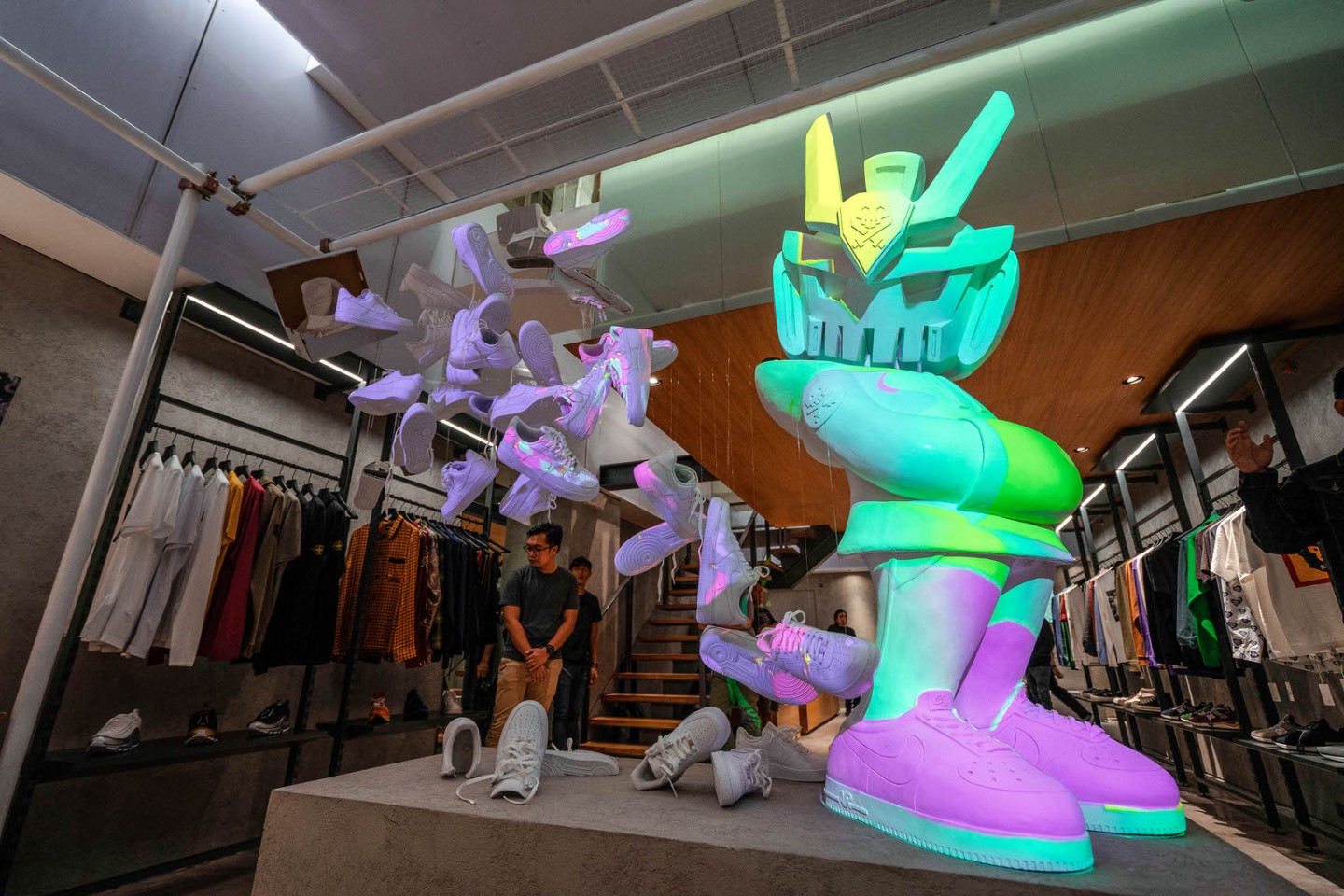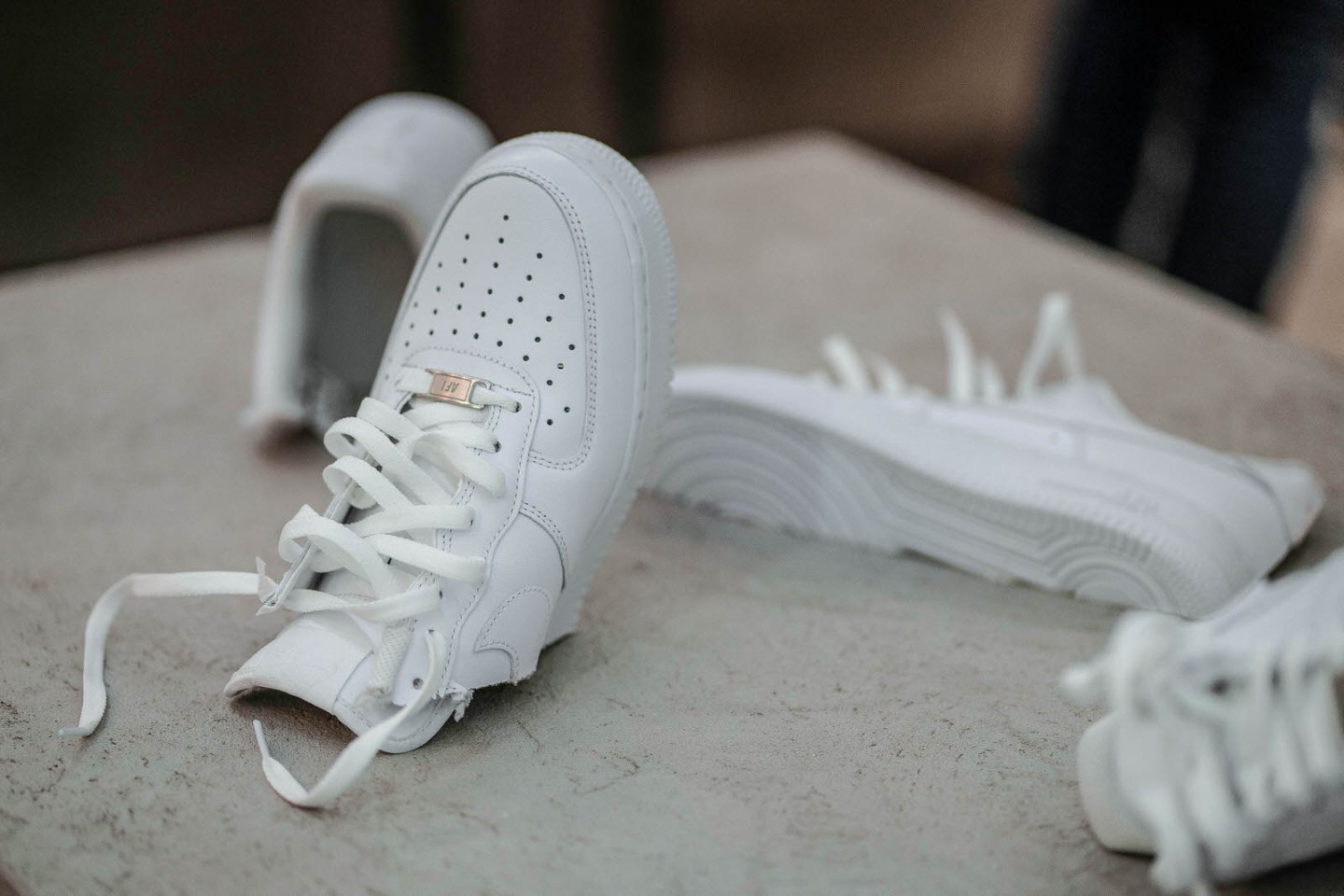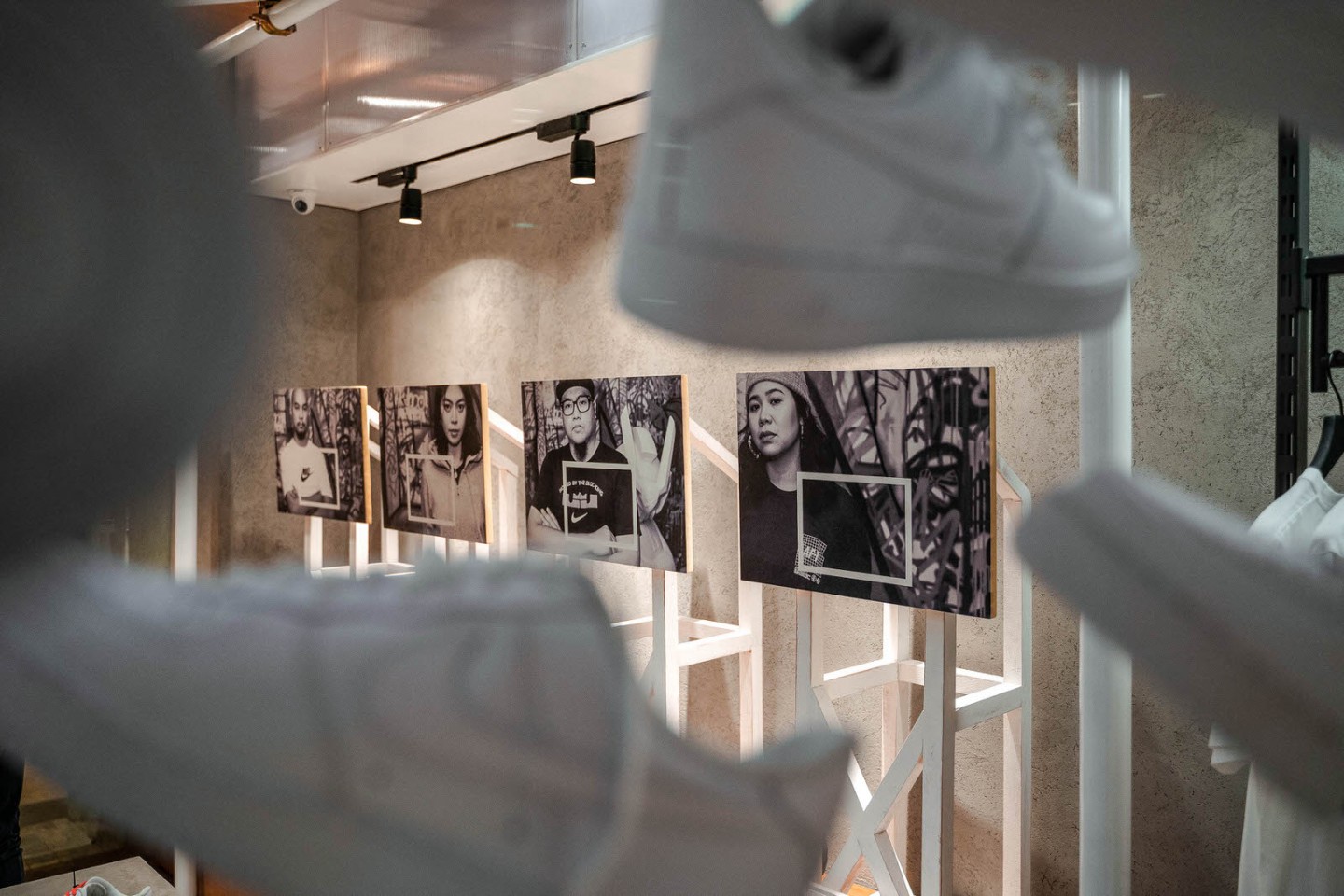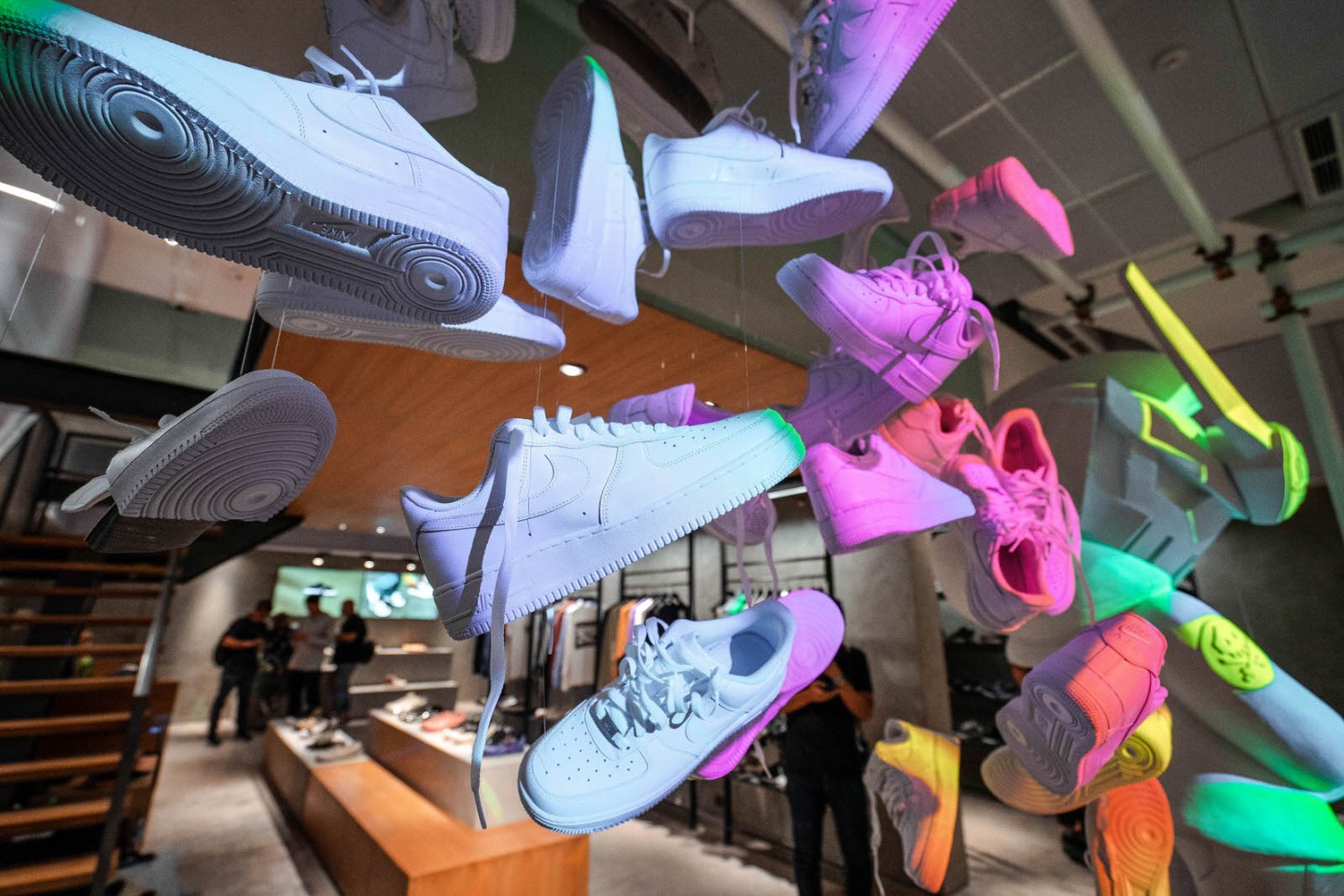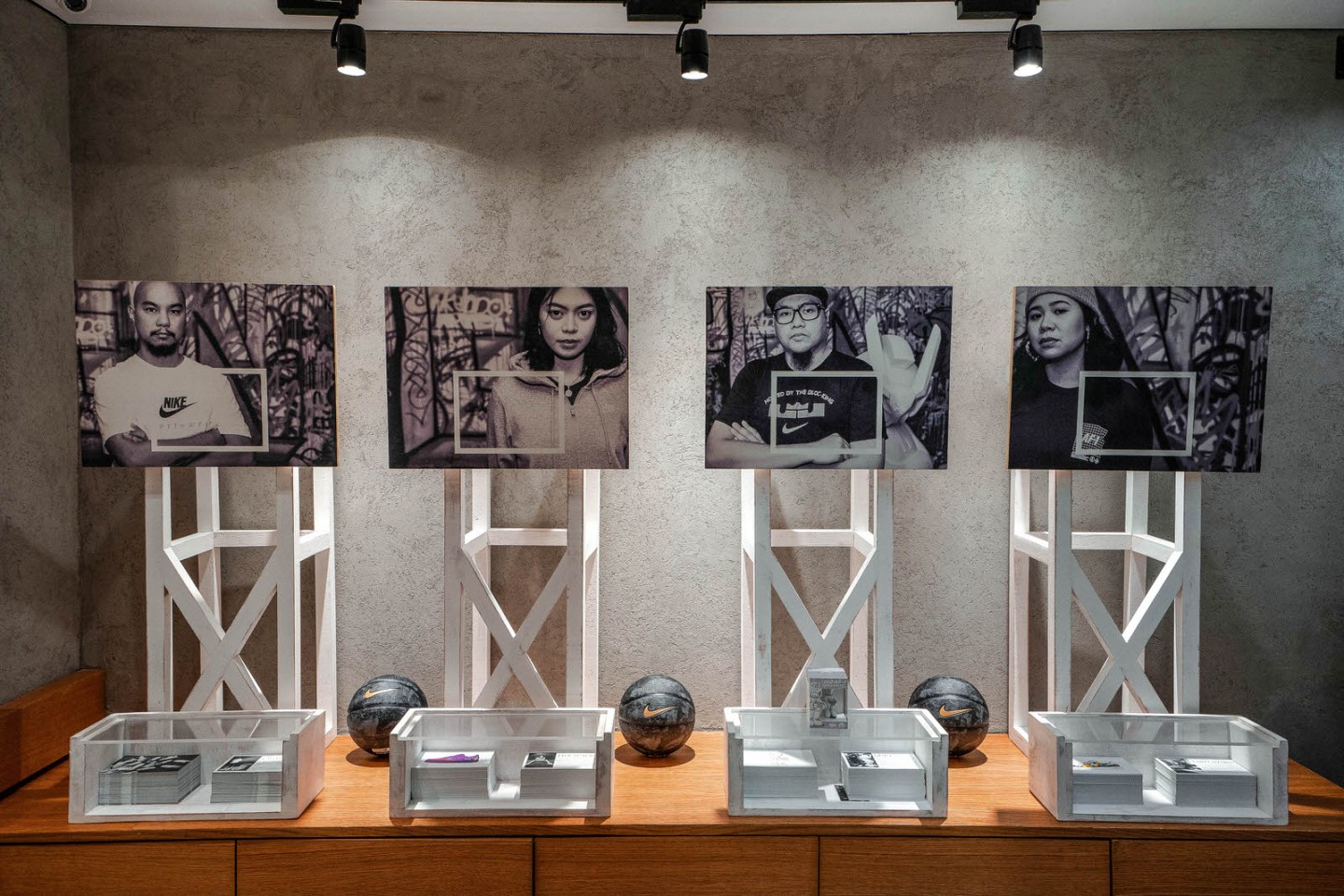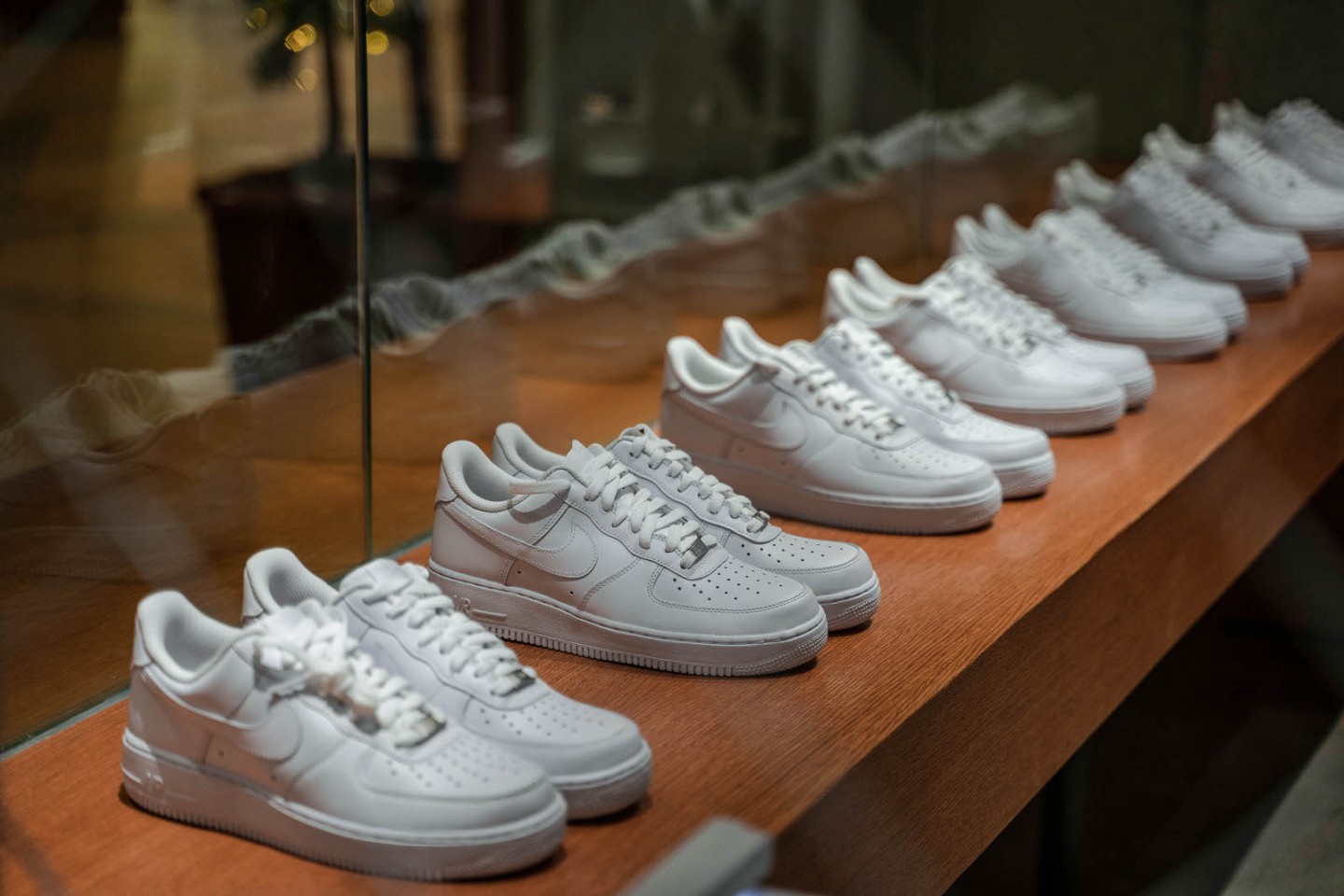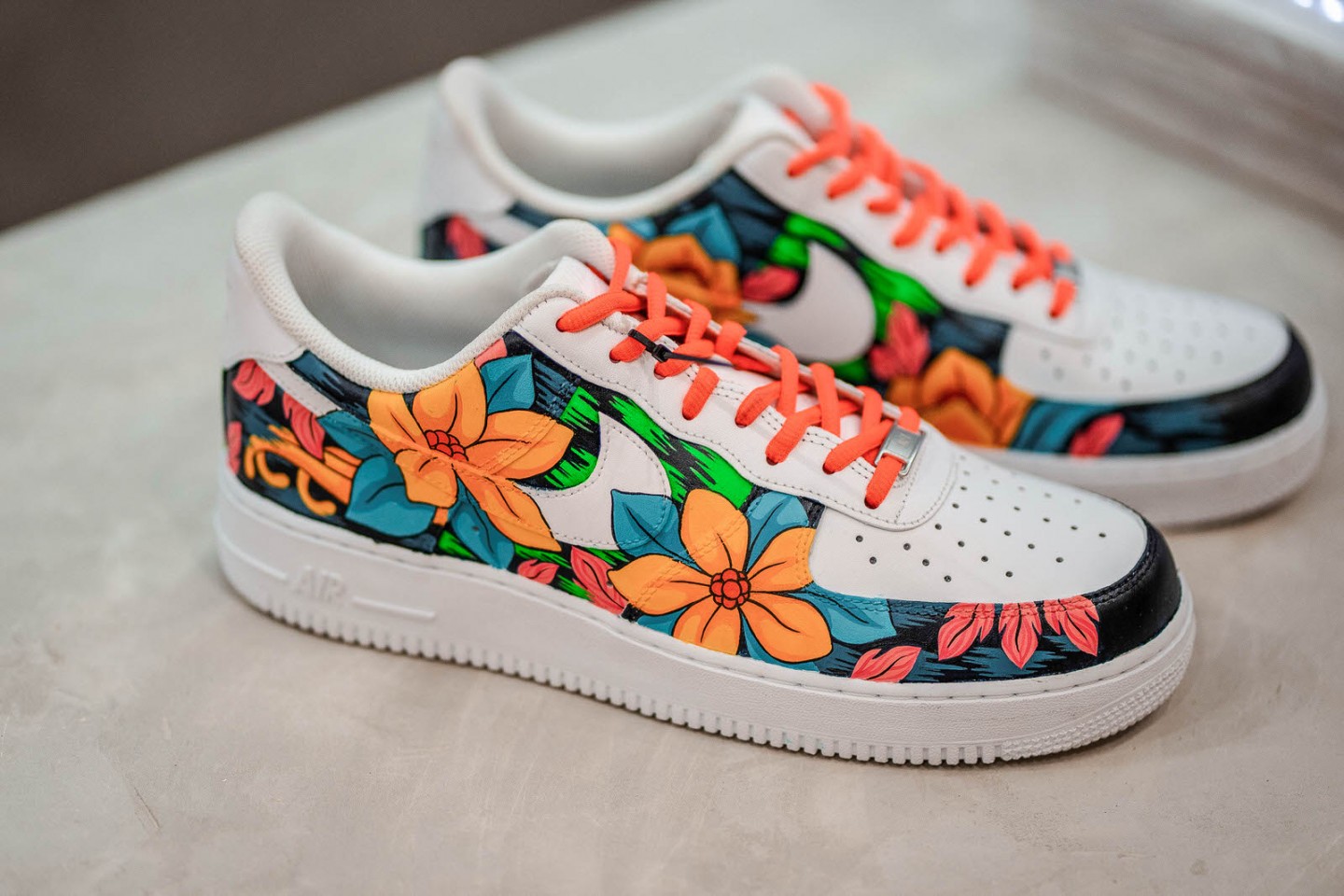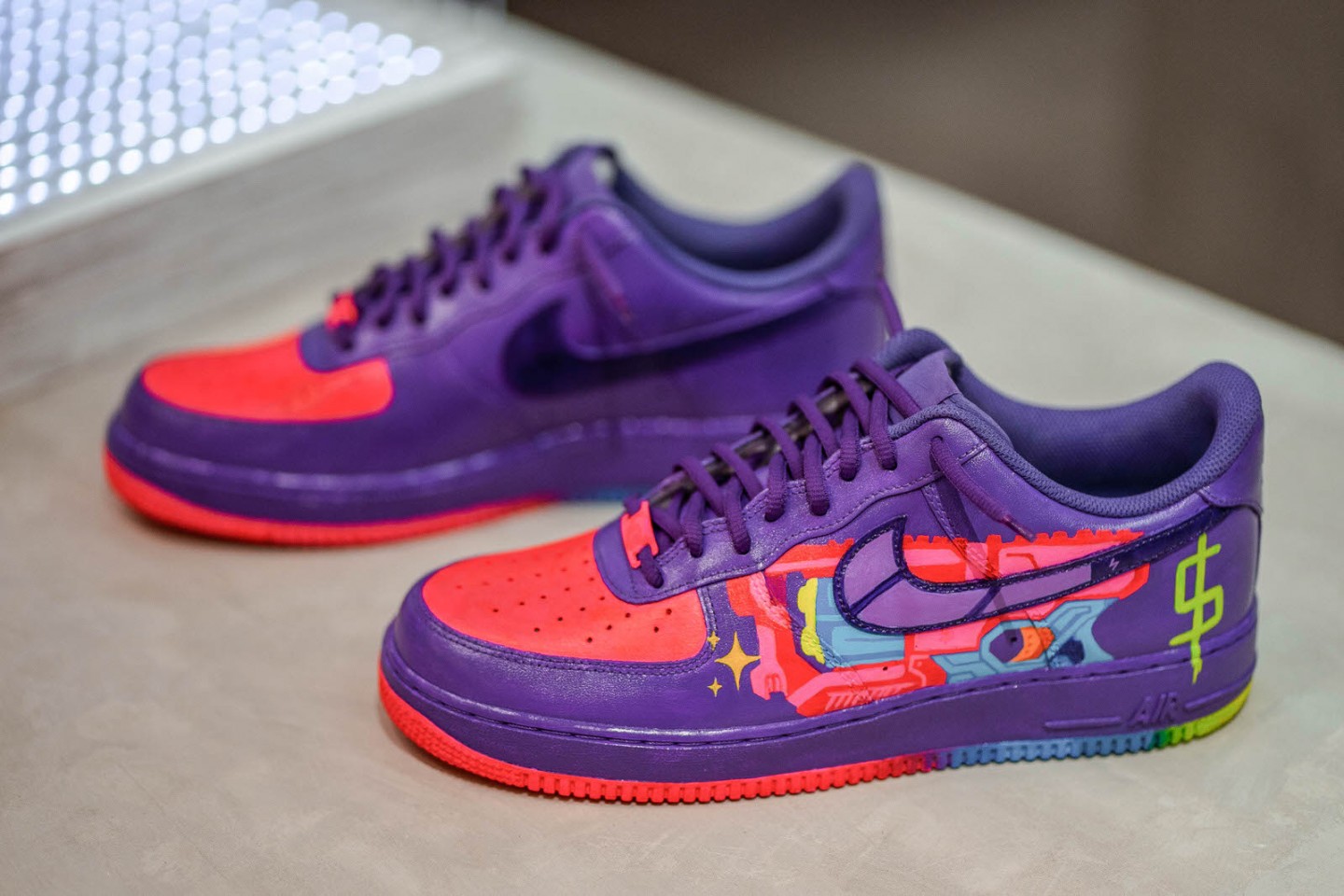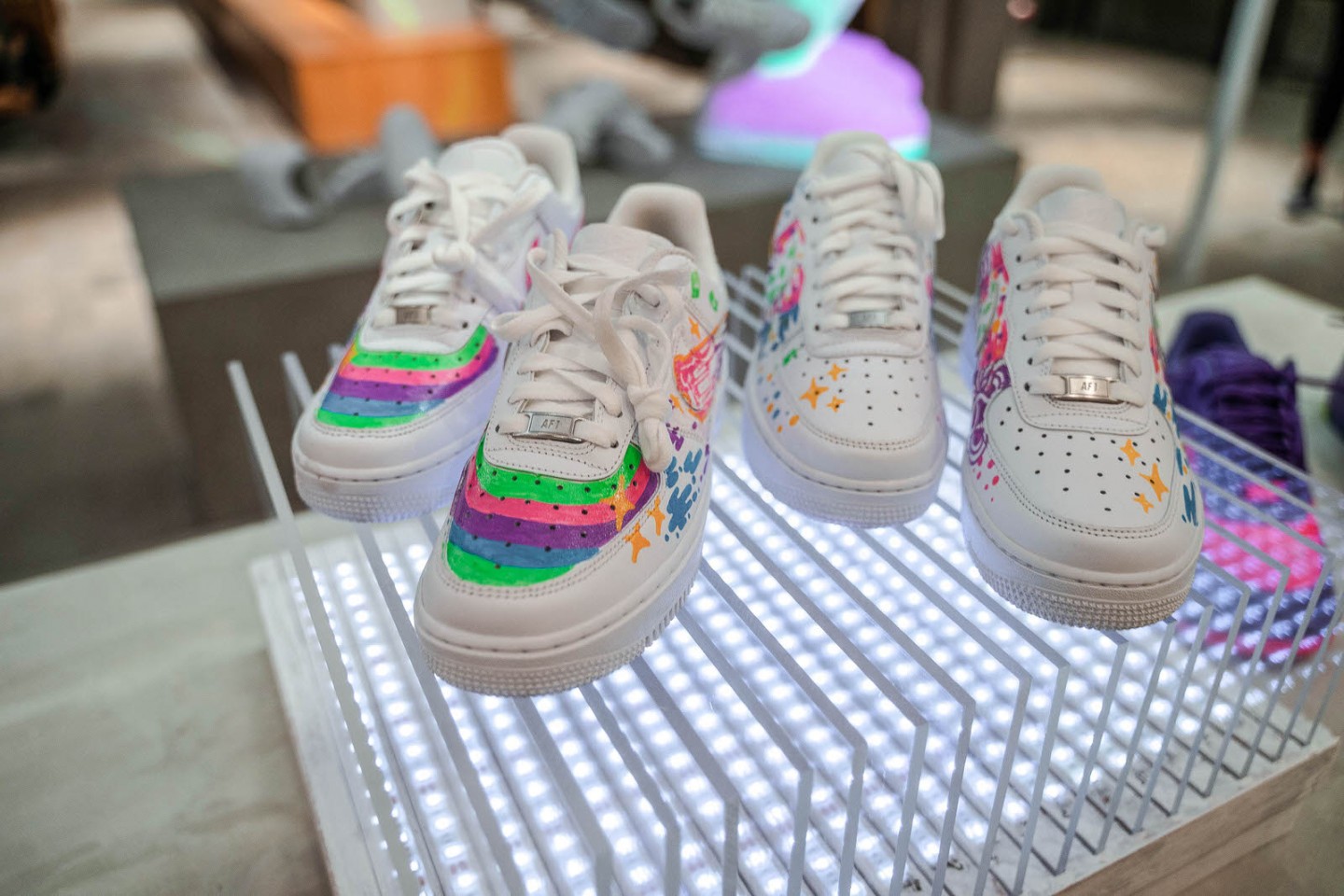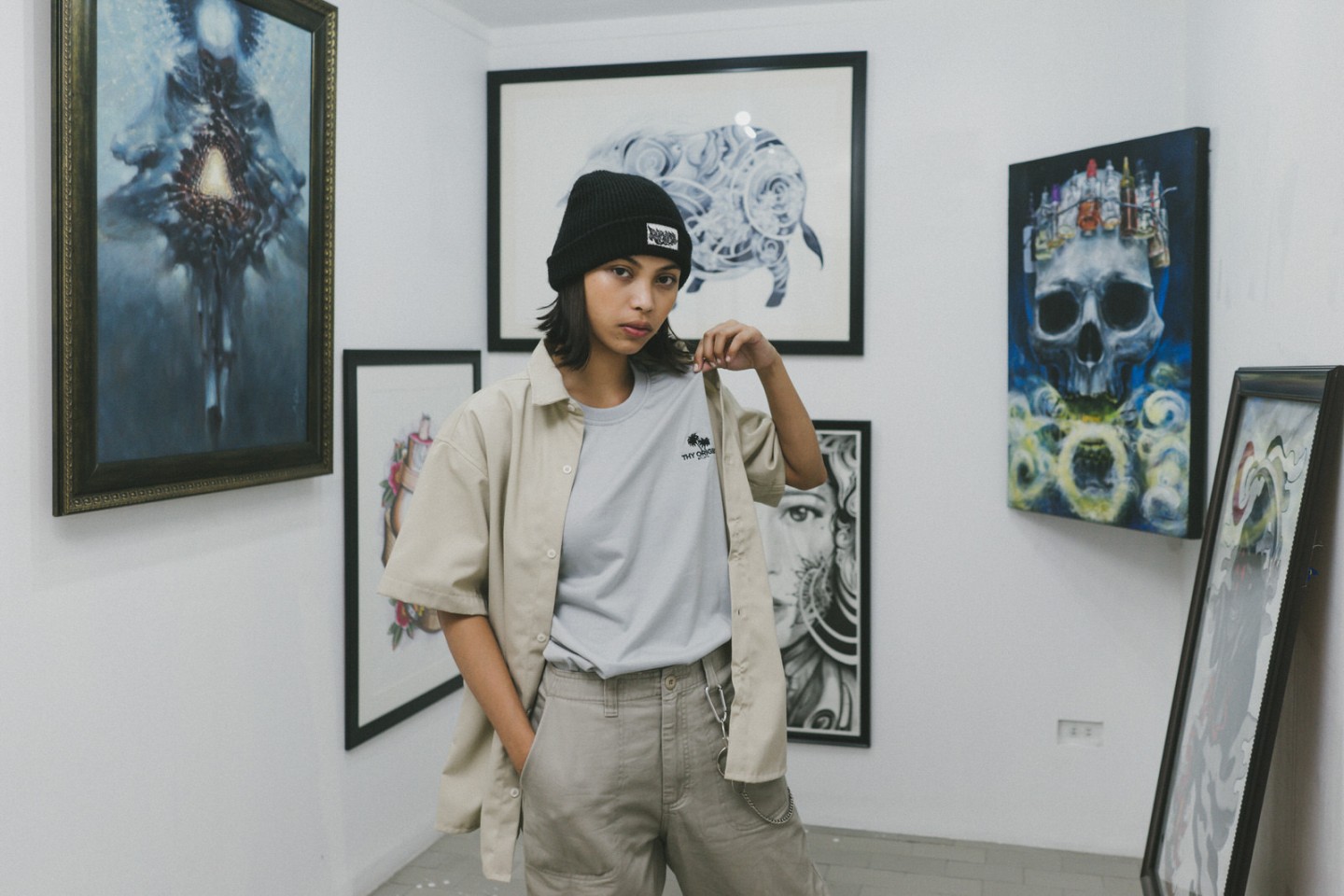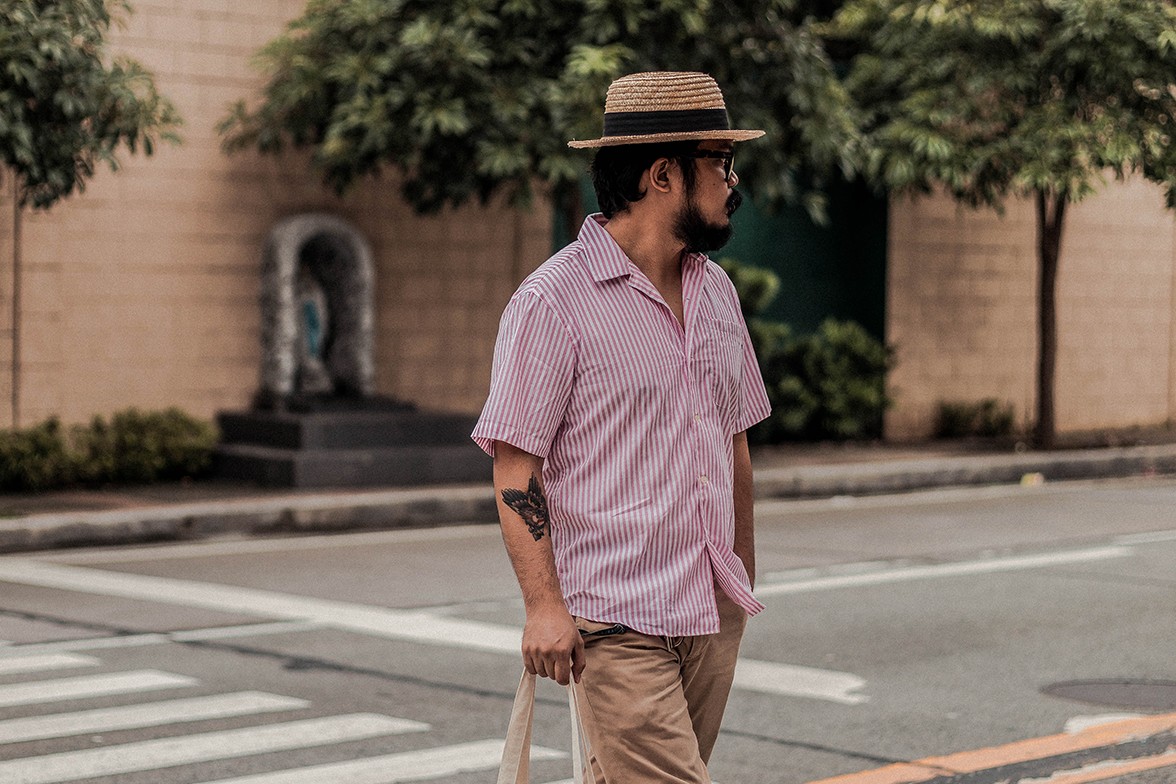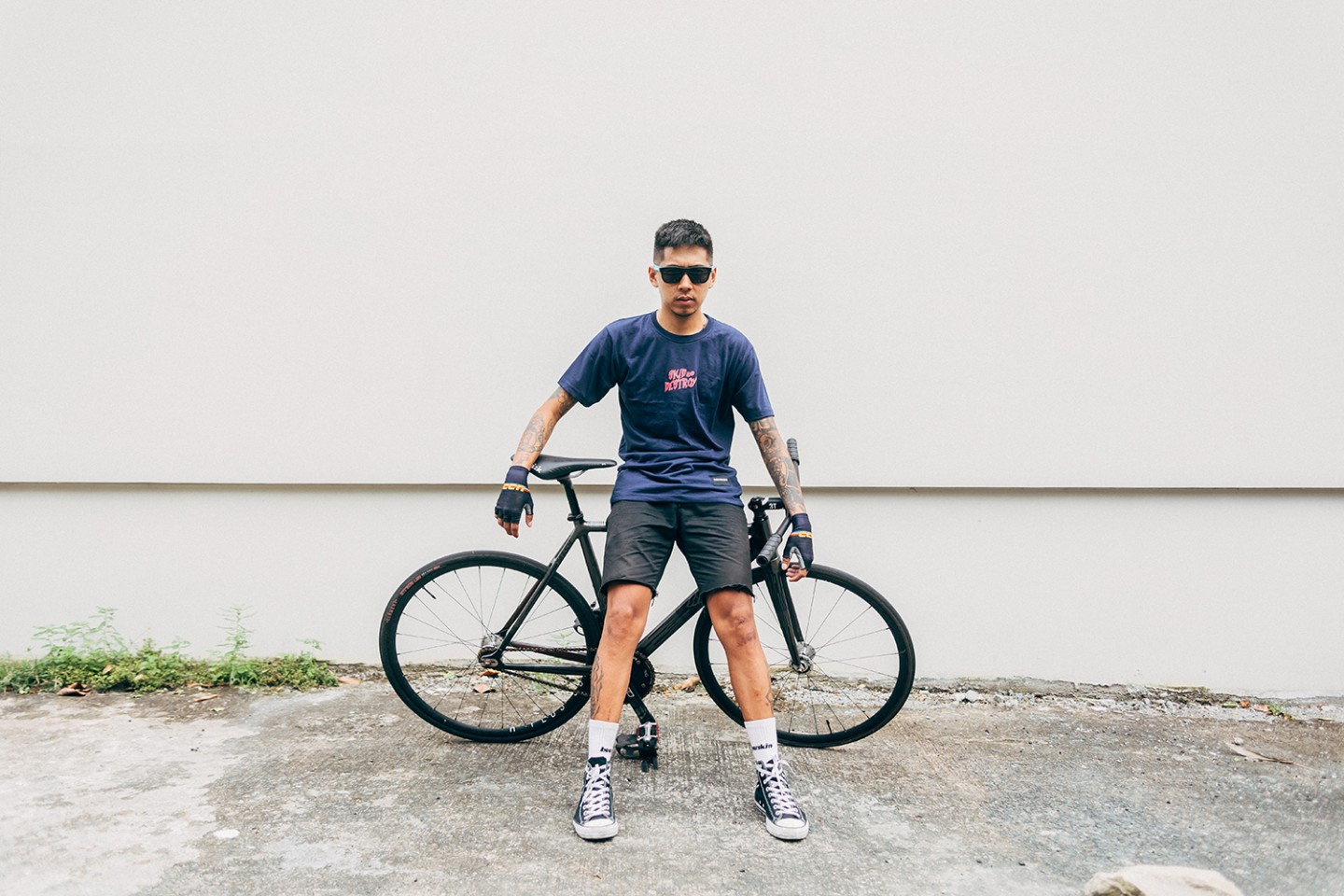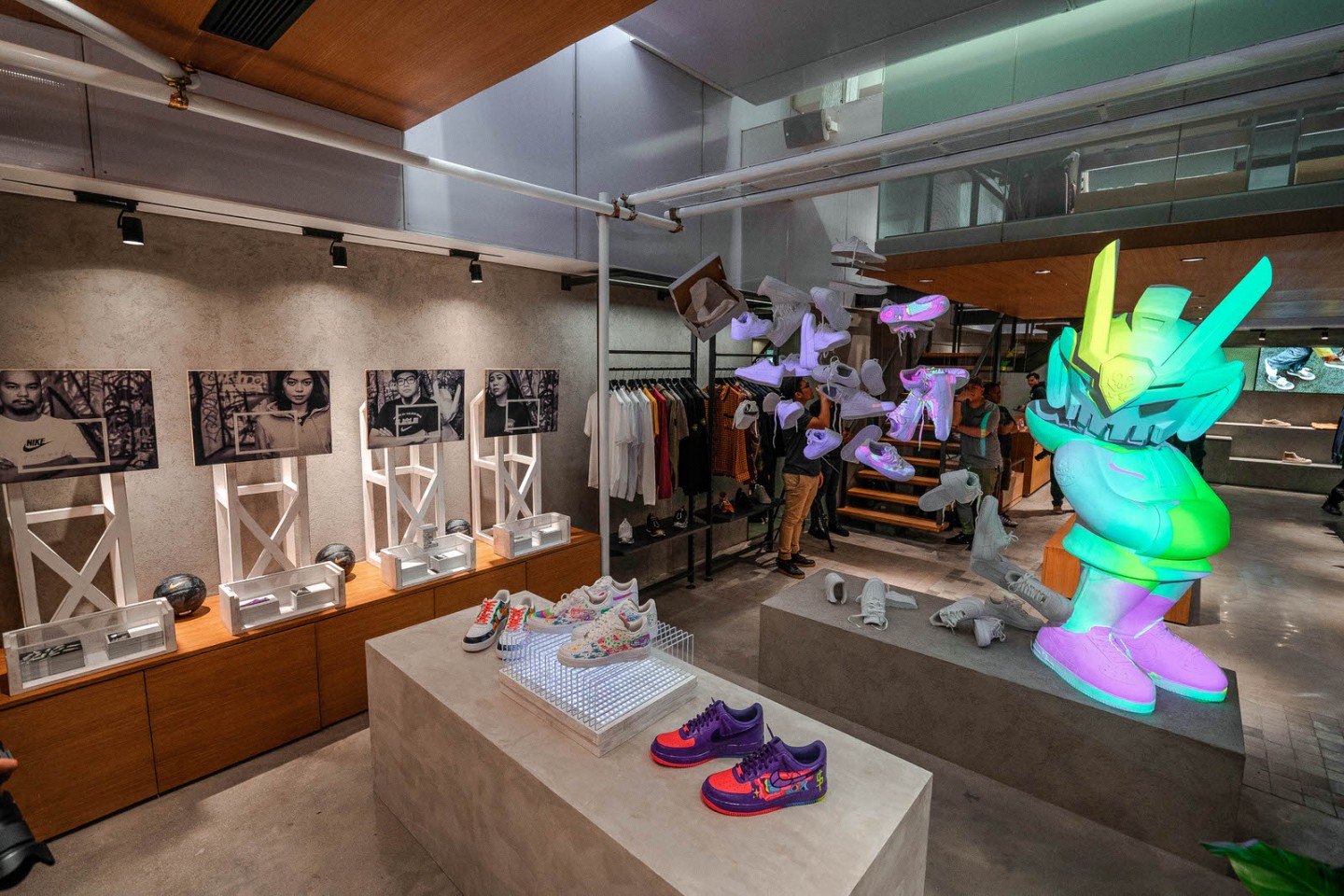
“The more our daily life appears standardized, stereotyped and subject to an accelerated reproduction of objects of consumption, the more art must be injected into it in order to extract from it that little difference.” — A quote from French philosopher Gilles Deleuze with Andy Warhol in mind
“The simplicity and perceived perfection of the AF-1 in its neutral state was such that even the tiniest alteration — highlights on the heel, a different logo, or an icy sole — was striking enough to earn a nickname of its own and a level of bragging rights for anyone that snagged a pair.” – Gary Warnett, Complex (2017)
If it looks like art, feels like art, behaves like art? Is it art?
Designers loved the Air Force 1 because it was a powerful space to expand on. It meant so much more than just a sneaker. With its unpretentious lines embodying minimalist art, the Triple White felt accessible to the masses—the way prints could be widely produced; the way Warhol brought us to question why a popular object couldn’t be perceived as valuable, or why art had to feel caged and possessed by the elite few. It impressed upon crowds, a symbol of alikeness, without diminishing the unique touches that made our individual characters stand out. Like art, the AF-1 rose above its mere existence as footwear, simultaneously elevating and grounding itself as the people’s shoe; representing universality, the sneaker unceasingly blurred boundaries between race, gender, and class. To this day, there have almost been two thousand renditions of the sneaker, not including the creative ways in which people have expressed themselves on this fresh, blank canvas; art taking flight upon the immaculate surface of the beloved Triple White.
Against a cultural backdrop, the Air Force 1 spoke strongly as hip hop’s sneaker, evident thru the lines that once echoed the streets: “Now don’t nothing get the hype on first sight like white on whites” – Nelly (Air Force Ones). Upon conception, news of the Air Force 1 had easily spread like wildfire; but even during today’s much calmer stoke, the AF-1 isn’t suffocated by the fluff of advertising. It has stories to tell on its own. They say a memorable product stands the test of decades, while a great one does for itself.
Using mediums traversing both tradition and technology, the Blank Canvas Collective hopes to inspire a future where we can progressively reinvent the classics.
As the Air Force 1 turns 35 years progressive, Nike celebrates one of its most memorable silhouettes by envisioning the iconic sneaker in a burst of reimagined tones. Enjoy the collaborative fusion of Manila’s Blank Canvas Collective: Kayo Cosio, Lari Gazmen, Jade Suayan, and Quiccs—an eclectic selection of Filipino artists chosen to explore the possibilities of tomorrow, while taking cues from yesterday’s art.
This installation is both futuristic and retro. You have this major bad toy called the UltraTEQ Air Force 1 KTV (Killer Titan Version) caught sporting a fresh pair of Triple White kicks, a sculpture created by multi-awarded, toy designer, Quiccs; the figure rendered in an ultra-matte, white finish, analogous to that of a “blank”—a plain white version of a designer toy that consumers can readily customize according to their liking. Today, the Triple White alludes to that of a blank, as you can grab a pair of AF-1’s bundled with its very own customization kit. Its canvas encouraging you to walk the shoes as your very own artist. How do you intend to make the Air Force 1 yours? It’s art that that you can use and interact with.
By the sculpture floats Kayo’s flock of shoes in trajectory, ones exploding from the origins of a box; several pairs of Air Force 1’s to be gazed upon from different angles, inviting the audience to circumnavigate the piece—a metaphor to experiencing different formats of reality.
Given Kayo’s selected themes of beauty, ecology, and equality, sits a series of interpretations by Lari and Jade: expressions painted on blank sneakers accompanied by illustrative installations composed of layered slides; visual springboards used to expand the work, as the artworks were transformed into digital graphics mapped onto the stark white surface of the sculptural division. Using mediums traversing both tradition and technology, the Blank Canvas Collective hopes to inspire a future where we can progressively reinvent the classics. In the year 1986, Nike once did the unthinkable by bringing forward a shoe they once shelved out; the people called it “retro’ing”—the idea non-existent until that radical take-off. It’s a good thing Nike understood to keep the canvas blank, because when the people spoke, the Air Force 1 took us back to the future: into skies of possibility and beyond.

